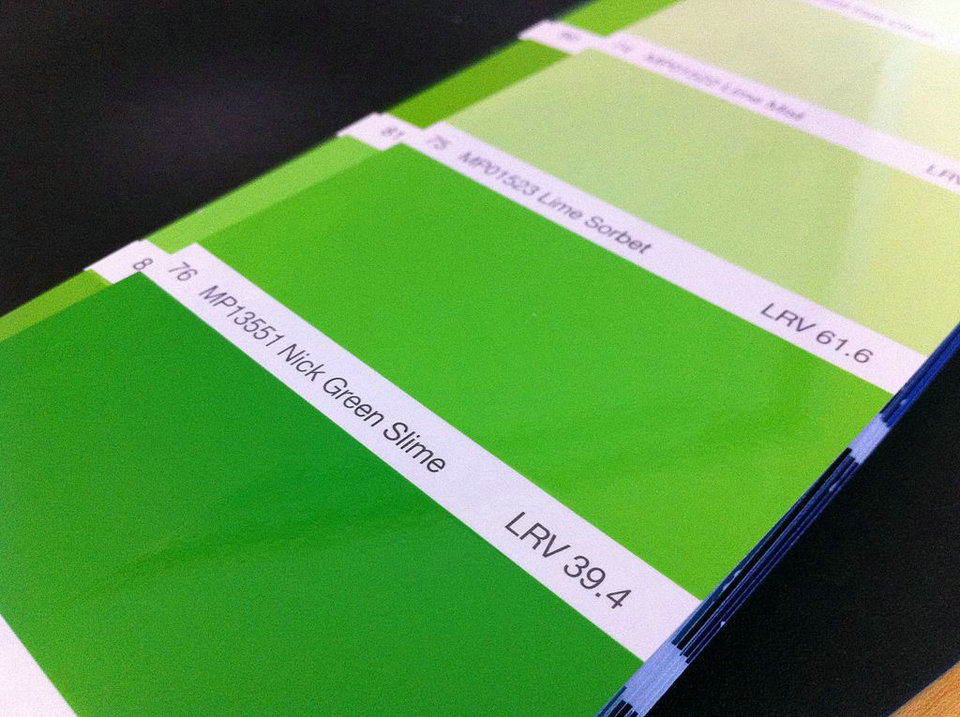In architecture, light reflectance value (LRV), is a measure of visible and usable light that is reflected from a surface when illuminated by a light source. The measurement is most commonly used by design professionals, such as architectural color consultants, architects, environmental graphic designers and interior designers.
LRVs are frequently reported on paint chips or paint samples. The values are used by lighting designers to determine the number and type of light fixtures needed to provide proper lighting for interior spaces.
Guidance
Designers of buildings must comply with the building codes applicable to the structure under consideration. Since 2004 guidance has existed on access to and use of buildings. The guidance is particularly concerned with provisions to assist the disabled, including those who are visually impaired. The guidance highlights the need for certain surfaces and features to contrast visually with their surroundings. Areas of particular interest are wall-to-ceiling and wall-to-floor junctions, exposed edges of sloping floors, seating and its surroundings, leading edges of doors, door opening furniture and door surfaces, sanitary fittings and grab bars.
This is relevant to a wide range of non-residential buildings, such as hospitals, schools, hotels, and theatres.
Codes of practice
The current guidance in the Regulations and in the relevant Codes of Practice, BS 8300:2009 is that adequate visual contrast is provided if the Light Reflectance Values (LRV) of the contrasting areas differ by at least 30 points. The current British Standard for the measurement of LRV is BS8493:2008+A1:2010.
Manufacturers are advised, for example, by the Guild of Architectural Ironmongery to publish the LRV for their products. Designers are beginning to demand them.
On signage with words or pictograms The Americans with Disabilities Act accessibility guidelines (ADAAG) recommend a light reflectance value of 70%, but this is not a strict requirement. Several other color combinations in the 60-70% range also work well.
Color contrast is determined by the formula [(B1 – B2) / B1] x 100, where B1 is the LRV of the lighter area, and B2 is the LRV of a darker area.
Source From Wikipedia
